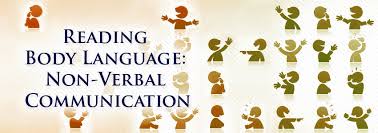
In this series on the four characteristics of top performing MGOs, we are looking at research from the Education Advisory Board that uncovered the one natural personality profile that would encompass the best MGO performers. The EAB has called that profile the Curious Chameleons.
In my last post, we looked at the first characteristic of top performing MGOs: they have intellectual and social curiosity.
The second characteristic is that the MGO has behavioral and linguistic flexibility. The research describes this trait as the skill to change speaking style and behavior depending on the audience. Notice this is not only about the ability to change but also the ability to listen and observe. Jeff and I have written about this point extensively – the MGO must major in listening and observing, not just “presenting a case.”
There are three sub-points to this ability to change speaking style and behavior. I have added my comments and application to each:
- Changes tone, inflection and vocabulary based on the background and experience of the donor. Once, I was with a MGO whose preferred communication style included a great deal of technical language and college-level words. It is always interesting to experience something like this since, on average, our day to day verbal communication is at a fourth- to sixth-grade level in terms of complexity of words and concepts. One of the problems this MGO was having was relating to the donor. First of all, he talked more than he listened. And secondly, when he talked he did not gauge the donor’s communication “receptor” in order to modify his language – he just babbled on like he always did. Here’s the question: do you know the communication style (content and delivery) of each of your donors? If not, you might practice listening and observing to figure it out. Look for types of words and how complex they are. Look for themes in the material the donor loves to talk about. Then adapt.
- Reads nonverbal cues, including body language, and adapts approach accordingly. I’ve watched this go wrong many times. The body language of the donor is saying “I don’t like what you are saying,” and the MGO totally misses it and continues down her scripted path. You just cannot do this! If you find it difficult to read nonverbal cues, I suggest you read about it, take some courses on it and/or get next to someone that does it well and learn from them. Once you train yourself to “pick up the vibe,” you will be so much better prepared to interact with your donor. And when you read a nonverbal cue that says “stop,” you could say something like this to the donor: “So, enough about that (the thing you were talking about). Is there anything that concerns you about what I have been talking about?” Try to draw the donor out to express what the nonverbal cue was about.
- Utilizes prior experience working with diverse audiences in order to take calculated risks. This point simply says that the more you practice the previous two points, the more experience you will have to apply right in the middle of a conversation with a donor. That application will give you confidence to be bolder in how you navigate the conversation, because you are properly reading what is going on.
This behavioral and linguistic flexibility shouldn’t be used as a manipulation of the donor, but rather as a sensitizing ability on your part as a MGO. You will be able to adapt what you say to the donor and how you say it, so the donor feels comfortable in your presence. She will begin to open up, trust you and share the information that will lead to a mutually satisfying relationship.
When you can “read” the other person’s nonverbal cues (and the needs those cues are expressing), you’ll be equipped to create comfort and trust in them. Try it.
Richard
Series details:







0 Comments